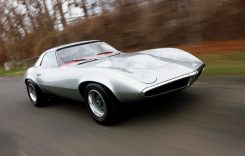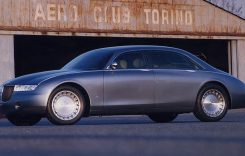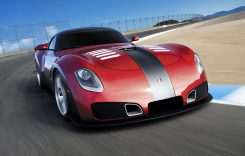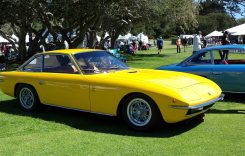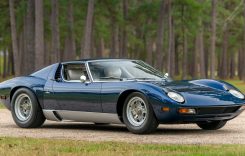Yamaha started the 250F game way back in 2000 when they introduced the 2001 YZ250F. It was a long three years until another manufacturer jumped into the deep end with the YZ, and from then on the 125 two-stroke became virtually irrelevant in competitive racing. The YZ250F has gone through many changes since its introduction 13 years ago, but surprisingly not everything has changed. Team Blue stubbornly holds fast to the utilization of a carburetor to feed its quarter-liter racer. Now before you pound out your complaints in the comment section below about how we are harping (and we are) on Yamaha for not adopting the now industry standard EFI method of fueling, I have this to ask – what would you rather have, honestly?

The decision to update a model with a new fueling system comes at the expense of time and money, and with the current state of the economy no manufacturer has much of either at the moment. So Yamaha must make do, but they do well. As much as we focus on the 39mm FCR flat side for being old school, there is no denying it works marvelously for something that relies on gravity and a low pressure vacuum, rather than a high pressure injector, to deliver the goods. The YZ250F kicks to life easily and the throttle response is crisp. On the track our test team did enjoy the YZ’s strong bottom end, but wished that it had more in the mid-range and top. Most said it felt a little underpowered in comparison to the rest of the field, but the most complaints stemmed from a bog or flat spot on hard landings.
Although the YZ250F puts out the least amount of HP, it does put that power to the ground more effectively when the conditions are slippery, dry or muddy.
“The Yamaha had a very broad power range, and I liked the bottom-end snap that the carbureted bike had,” says pro racer Chris See. “But with the hard landing the bike would just cut-out, and that just simply made me nervous.”
When strapped down to our Dynojet 250i dynamometer the YZ250F lingered near the bottom of the pile in both horsepower and torque with 32.93 hp and 17.59 lb-ft, respectively. While the peak horsepower is trailing the big dogs on the charts, the torque is virtually identical between all six machines. When the gate dropped the Yamaha covered the Holeshot Test’s 125 feet in a second-best 4.296 seconds at 41.8 mph. An interesting result considering the dyno numbers, but it should be noted that the start straight was a bit hard and greasy. The YZ also was the runner-up in the Roll-On Test, proving it puts the power it does have to the ground effectively with a time of 2.171 seconds over a distance of 86.1 feet.
Although the Blue Bomber is the lightest in the test at 228 pounds with a full tank of fuel, the brakes are not as effective as others. The front lever has an excellent feel, but the power is slightly lacking. Our crew also wished for more initial bite.
“The brakes on the Yamaha didn’t feel very powerful and I found myself braking earlier in the corners,” comments Matt Armstrong. “And I experienced a little fade on the rear brake.”
The YZ’s Kayaba Speed-Sensitive System front fork and piggyback shock are both in the ballpark in terms of valving, but the spring rates are too soft for our crew, especially on hard landings and in the big bumps. Even our lightest rider, Vicki Golden, who weighs in at just 140 pounds, feels it could use stiffer spring rates.
The YZ250F’s compact layout fits smaller riders like Matt Armstrong like a glove, and its low center of gravity makes it easy to get into a turn.
“The Yamaha had one of the better suspension set-ups for me, but it was a bit too soft for me on the harsher landings,” explains Golden. “I’m smaller so if it’s good for me, it going be too soft for anyone heavier.”
In the handling scores the Yamaha also struggled, mostly due to the light springs making it not as predictable as it could be. The YZ’s low center of gravity makes it easy to drop into a corner, but as the speeds increase and the load on the suspension ramps up, it becomes more difficult to jam into rough ruts.
Troy Lee Designs’ Nate Verdugo summed it up succinctly. “The YZ250F felt really light and nimble, and it handled well. But no where as good as the Honda or the Kawasaki.”
Rowing through the gears on the Yamaha is met with solid shifts, although the transmission does suffer from a notchy feel under hard acceleration. The clutch pull is light and the feel is top-notch. However, clutch fade begins to creep in as the moto wears on.
“The Yamaha’s clutch was the worst in the field along with a transmission that I was having some issues with a sticky feel,” says Nick Thiel. “It was my least favorite package.”
The compact ergonomics have our test crew split in their assessments, with some loving it, others hating it, and some indifferent. The slighter size fits smaller riders like Matt Armstrong like a glove, but tall riders like the six-foot tall Adam Waheed struggle with the cramped layout. Even some of the mid-sized riders like Chris See had issues.
With just a few dollars the 2013 YZ250F can be a potent racer, and with one of the lowest sticker prices, the YZ leaves you with some cash to spend on mods.
“The Yamaha has a decent feel,” admits See. “But I seemed to keep having problems with catching my boot on the end of the shrouds and that really started to bother me.”
In the Super Lap Test the 2013 Yamaha YZ250F dropped to the back of the pack in a tie with the Husqvarna. Our AMA Pro racer See put down the fastest lap on the YZ with a 1:21.0, which was actually faster than the Husqvarna and Kawasaki. When the times were averaged over the three of our sprinters, the time increased to a 1:23.8.
In our 2013 250 Motocross Shootout the Yamaha YZ250 finishes in fourth place. It’s a competent handler and the bottom end grunt is impressive, but it’s not enough in this contest where even the slightest of flaws will cost dearly on the scoresheet. Some of the troubles like the soft suspension can be cured with a few bucks, and as the YZ250F is the second cheapest at $7290 there is enough change left over to do some tuning.
